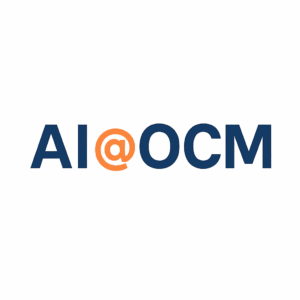Scaling a business from a medium-sized company to a large enterprise is a challenging journey fraught with potential pitfalls. Effective Organizational Change Management (OCM) is crucial in helping businesses navigate this critical transition successfully. This blog post explores the role of OCM in supporting medium-sized companies as they expand, the common obstacles they face, and how OCM can be strategically implemented to facilitate sustainable growth and stability.
Understanding Organizational Change Management in Scaling Businesses
Organizational Change Management involves preparing, supporting, and helping individuals, teams, and organizations in making organizational change. It is especially crucial for medium-sized companies looking to expand into large enterprises, as the scale of change required is often substantial and impacts multiple aspects of the organization.
The Significance of OCM for Medium-Sized Companies
For medium-sized businesses, growth not only brings opportunities but also significant challenges. These challenges can include integrating new technology, entering new markets, scaling operations, or even changing organizational culture. OCM helps companies manage these changes effectively by focusing on the people side of change, which is often the most complex and sensitive aspect.
Common Pitfalls in Business Scaling and the Role of OCM
Scaling a business involves increasing its operational footprint and capabilities in a sustainable way. However, many companies encounter similar challenges during this growth phase. Here’s how OCM addresses these challenges:
Maintaining Company Culture
Challenge: As companies grow, maintaining a cohesive company culture can become difficult. The influx of new employees and the introduction of new processes can dilute the established company values and ethos.
OCM Solution: OCM emphasizes consistent communication and engagement strategies that help instill the company’s values and culture among all employees, old and new. Regular training sessions and team-building activities are utilized to reinforce the company’s core beliefs and practices.
Managing Increased Complexity
Challenge: Scaling operations often lead to increased complexity in processes and management structures. This can result in inefficiencies and a loss of the agility that smaller companies enjoy.
OCM Solution: OCM provides a framework for streamlining processes and introducing scalable systems that can manage increased complexity. This includes the adoption of new technologies that enhance productivity and improve coordination across the organization.
Aligning New and Existing Employees
Challenge: Bridging the gap between the skills and expectations of new and existing employees can be difficult, especially when rapid hiring is necessary to support growth.
OCM Solution: Through structured onboarding programs and ongoing professional development, OCM ensures that all employees are aligned with the company’s objectives, fully equipped to handle their roles, and integrated into the organizational culture.
Overcoming Resistance to Change
Challenge: Employees and even managers may resist changes that come with scaling, especially if they feel their positions or the company’s direction is threatened.
OCM Solution: OCM involves early and transparent communication about the reasons for changes, the benefits they bring, and the impacts they will have. It also includes involving employees in the change process, thereby reducing resistance and fostering a collective responsibility for success.
Implementing OCM in Medium-Sized Companies
To leverage OCM in facilitating growth, medium-sized companies should follow a structured approach:
Step 1: Conduct a Change Readiness Assessment
Before implementing significant changes, it is crucial to evaluate the organization’s readiness. This assessment should consider the company’s current capabilities, its workforce’s adaptability, and the resources available for managing change.
Step 2: Develop a Comprehensive Change Management Plan
Based on the readiness assessment, develop a tailored OCM plan that addresses specific needs. This plan should include clear objectives, the scope of the change, roles and responsibilities, and a detailed timeline.
Step 3: Engage Stakeholders at All Levels
Stakeholder engagement is key to successful change management. Regular updates, feedback loops, and inclusive decision-making processes help ensure that all stakeholders are onboard and committed to the change initiatives.
Step 4: Provide Training and Support
Equip your workforce with the necessary skills and knowledge to handle new systems and processes. Support structures, such as help desks or mentorship programs, should also be established to assist employees during the transition.
Step 5: Monitor, Evaluate, and Adapt
Continuously monitor the implementation of change initiatives and evaluate their effectiveness. Be prepared to make adjustments based on feedback and the evolving needs of the organization.
Conclusion
For medium-sized companies aiming to scale into large enterprises, the role of Organizational Change Management cannot be overstated. By effectively managing the human aspects of change, companies can avoid common pitfalls and ensure that their growth is not just rapid but also sustainable and aligned with their long-term strategic goals. Implementing a robust OCM strategy facilitates smoother transitions, better engagement, and ultimately, a stronger, more cohesive enterprise ready to thrive in its expanded form.






